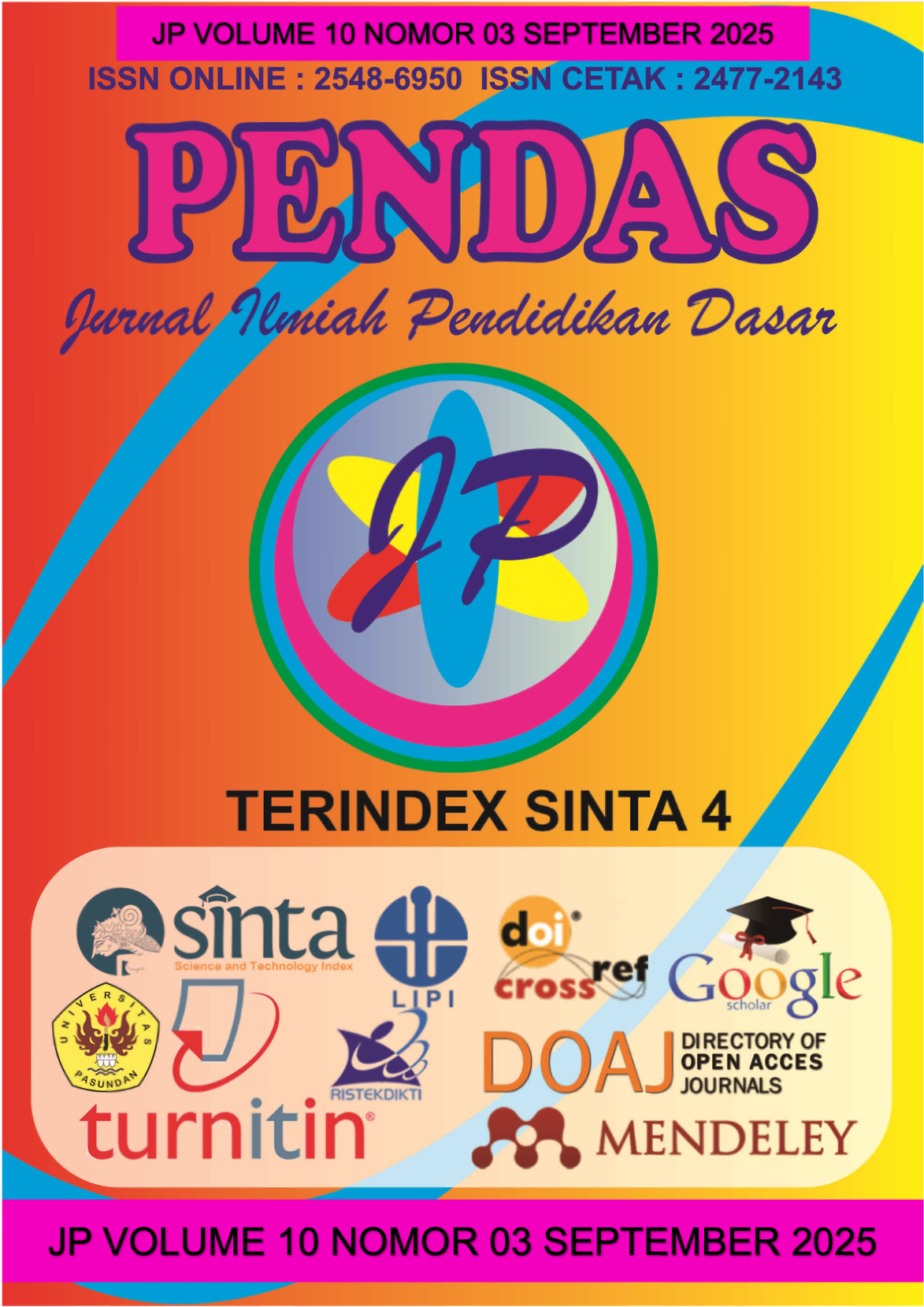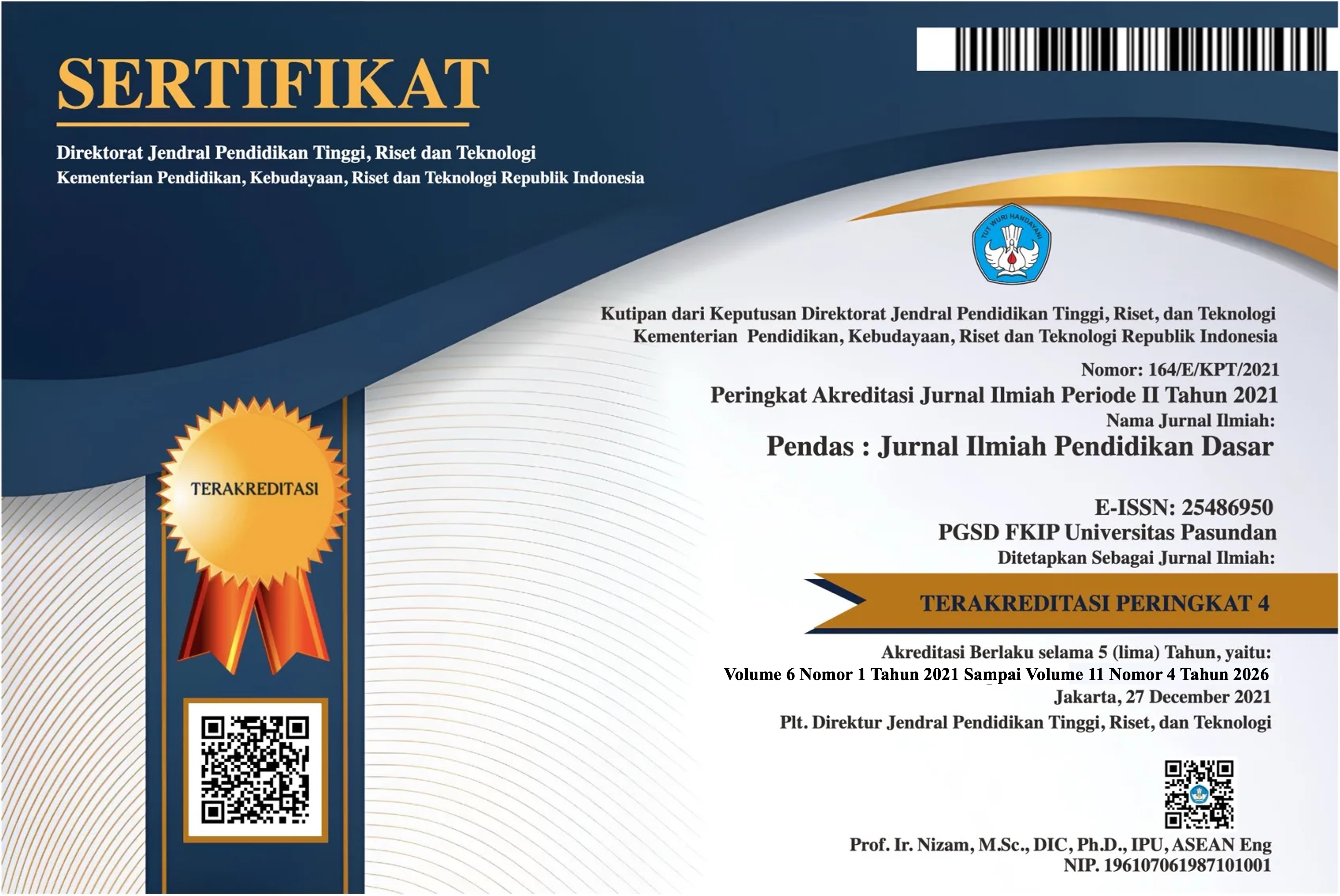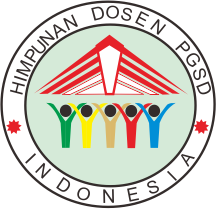PENGEMBANGAN MEDIA PEMBELAJARAN ULAR TANGGA PINTAR (ULTAR) BERBANTUAN FLASHCARD PADA MATERI ENERGI UNTUK MENINGKATKAN HASIL BELAJAR SISWA KELAS VI SEKOLAH DASAR
DOI:
https://doi.org/10.23969/jp.v10i03.29296Keywords:
Learning media, Smart Ladder Snake, Flashcards, Learning outcomes, IPAS, Primary SchoolAbstract
The problem raised in this study is the low learning outcomes of grade VI students in IPAS subjects, especially energy material, which is caused by the lack of use of innovative and fun learning media. The media used are still conventional and have not been adapted to the characteristics of elementary school students who are at the concrete operational stage according to Piaget's theory. The purpose of this research is to develop innovative learning media in the form of Ular Tangga Pintar (ULTAR) assisted by Flashcards to improve the learning outcomes of grade VI elementary school students on energy material. This research uses the Research and Development (R&D) method with the ADDIE development model which consists of five stages: Analysis, Design, Development, Implementation, and Evaluation. The research subjects were students of class VI UPT SD Negeri Gemulung 3, with a total of 7 students. Data collection techniques were carried out through observation, interviews, questionnaires, documentation, as well as pretests and posttests. The data obtained were analyzed using validation test, practicality analysis, and effectiveness test with N-Gain formula. The results showed that ULTAR media assisted by flashcards was declared very valid by linguists (96%), material experts (98%), and media experts (98%). In terms of practicality, the results were very practical based on teacher questionnaires (100%) and student questionnaires (98.2%). This media also proved to be very effective in improving learning outcomes with an average N-Gain of 0.96. Thus, this media is suitable to be used as an alternative to fun and effective thematic learning in elementary schools.
Downloads
References
Ariyanto, Chamidah, & Suryandari. (2020). Pengembangan Media Ular Tangga Terhadap Pembelajaran Matematika Materi Pecahan Sederhana Pada Siswa Sekolah Dasar. Trapsila: Jurnal Pendidikan Dasar, 2(01), 85. https://doi.org/10.30742/tpd.v2i01.917
Aryani, Y. (2023). Pengembangan Media Ular Tangga Pada Pembelajaran Tematik Tema 7 Dalam Meningkatkan Hasil Belajar Kelas V Fakultas Tarbiyah Dan Ilmu Keguruan Oktober 2023 Pengembangan Media Ular Tangga Pada Pembelajaran Tematik Tema 7 Di Madrasah Ibtidaiyah Negeri 5 Jembe. 1–76.
Gusti, N., Made, A., & Lestari, Y. (2021). Upaya Meningkatkan Pemahaman Nilai Agama Pada Anak Usia Dini Melalui Media Pembelajaran Ular Tangga “Widya Suputra” Berbasis Tri Hita Karana. Jurnal Edutech Undiksha, 8(1), 23–30. https://ejournal.undiksha.ac.id/index.php/JEU/index
Hake, R. R. (1999). Analyzing change/gain scores. (Unpublished manuscript). Indiana University.
Maisyarah, M., & Firman, F. (2019). Media Permainan Ular Tangga, Motivasi Dan Hasil Belajar Siswa Di Sekolah Dasar. Universitas Negeri Padang, 5(3), 2–11.
Marinda, M. (2020). Kognitif dan Problematika. An-Nisa’ : Jurnal Kajian Perempuan Dan Keislaman, 13(1), 116–152.
Putri, P. (2022). Pentingnya Media Pembelajaran dalam Meningkatkan Prestasi Belajar. Early Childhood Islamic Education Journal, 3(01), 73–85. https://doi.org/10.58176/eciejournal.v3i01.679
Raztiani, R., & Indra, I. (2019). Pengaruh Model Pembelajaran Interaktif Terhadap Motivasi Belajar Siswa. PendidikAN BAHASA DAN SASTRA INDONESIA, 2(1), 72–86.
Warsito, Maryani, & Purwanto. (2020). Penerapan Model Project Based Learning (PJBL) Dalam Pembelajaran Daring Untuk Meningkatkan Aktivitas dan Hasil Belajar IPA kelas VI SDIT Salsabila 3 Banguntapan. Prosiding Pendidikan Profesi Guru, 1–9. http://eprints.uad.ac.id/21187/
Yuni, Y. A., Zulhanan, Z., & Sodikin, S. (2019). Pengembangan Permainan Ular Tangga Bernuansa Islami Untuk Pembelajaran IPA. Indonesian Journal of Science and Mathematics Education, 2(2), 194–203. https://doi.org/10.24042/ijsme.v2i2.4343
Downloads
Published
Issue
Section
License
Copyright (c) 2025 Pendas : Jurnal Ilmiah Pendidikan Dasar

This work is licensed under a Creative Commons Attribution 4.0 International License.



















